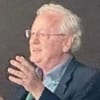By: Brian Lantz
The real problem exposed by the collapse of the Francis Scott Key Bridge in Baltimore was free-trade, financialization lunacy.
Consider: most U.S. bridges that cross U. S. harbor entrances were built in the 1980's or much earlier. Yet even in the 1980's, the largest container ships built were Panamax vessels with a capacity of 65,000 – 80,000 deadweight tons (DWT)*. Today, container ships are humongous, and stacked into the sky! They have a capacity of up to 240,000 DWT, triple the size.
In 1980 the Francis Scott Key Bridge was struck by a ship without significant consequence, according to a 1983 report by the National Research Council. That was then. Shall we rebuild all major bridges to withstand the physical impact of these larger ships?
The Dali can carry the equivalent of almost 10,000 standard-sized metal shipping containers (TEUs), and at the time of the accident on March 26th, was carrying some 4,700 TEU containers. But while those figures might be impressive, the Dali pales in comparison to the world's largest container ships, which are built to carry more than 24,000 TEU's each.
Gaining our wits, we recognize a deeper problem: why are we importing these humongous quantities of goods, when we should produce much of this here?!? We have a trillion dollar per year U.S. deficit in foreign trade, on top of gazillions of dollars in national debt and climbing. (By the way, the trade deficit is with virtually the whole world, not just with China, which currently accounts for about 14% of our current trade deficit.)
Ironically, the north entrance to the Key Bridge skirts around Sparrows Point, once home to the nation's largest steel producing facility and the related shipyards which produced many of the Navy's ships for World War II. Both Bethlehem Steel and Pittsburgh Des Moines Steel Company which won the contract to build the Francis Scott Key Bridge back in 1972, are long gone, sacrificed to Wall Street vultures, like Wilbur Ross, who stripped them of component parts, refused to invest in any new technology, and sold them off repeatedly until they were formally bankrupt. Now the Port of Baltimore is just one center of the vast import network which has substituted for U.S. production.
Today, supply chains are overall just nuts. Today, our exports are not high value capital goods, which is what our economy should be profitably exporting. Yet the "flea market/free trade" Kool-Aid is still imbibed by fools, peddled in Economics 101 classes around the world.
Here is a recent paean to free trade from the precincts of the University of Chicago's School of Business:
"A country that innovates less benefits more from trade liberalization since it is now easier for the country to 'import' ideas ... lower tariffs promote the introduction and eventual dominance of better-quality products on both sides of a border, which can be a catalyst for economic growth."
Has anyone noticed that the U.S. economy is awash with imported, innovative "ideas"?
Here is another doozy from the oh-so-conservative Heritage Foundation, written in 2000:
"Societies that enact free trade policies create their own economic dynamism -- fostering a wellspring of freedom opportunity and prosperity that benefits every citizen. In recent years the United States has demonstrated the power of this principle. Nor are American citizens alone in benefiting from those free trade policies that the U.S. enacts..."
Let's now read from "The City" of London's very own mouth piece, The Economist of London in 2018, attacking President Trump's tariffs on steel and aluminum.:
The Economist said, with respect to Trump's steel tariffs: "This is a question close to the heart of The Economist. It was founded as a newspaper in 1843 to campaign for free trade. The issue of the day was the Corn Laws... tariffs on steel will impose a real cost on those who consume it."
Of course, our Founding Fathers & patriots warned us.
Here is just a bit of what Alexander Hamilton wrote. This is from The Continentalist, No. 5, dated April 18, 1782:
“To preserve the balance of trade in favor of a nation ought to be a leading aim of its policy,” Hamilton declared. “The avarice of individuals may frequently find its account in pursuing channels of traffic prejudicial to that balance, to which the government may be able to oppose effectual impediments.”
Such insights would be at the heart of Hamilton's Report on Manufacturers, presented to the Congress in 1791.
Here is what Henry C. Carey, Lincoln's close advisor, famously wrote:
Two systems are before the world; ... One looks to increasing the necessity for commerce; the other to increasing the power to maintain it. One looks to underworking the Hindoo, and sinking the rest of the world to his level; the other to raising the standard of man throughout the world to our level. One looks to pauperism, ignorance, depopulation, and barbarism; the other to increasing wealth, comfort, intelligence, combination of action, and civilization. One looks towards universal war; the other towards universal peace. One is the English system; the other we may be proud to call the American system, for it is the only one ever devised the tendency of which was that of elevating while equalizing the condition of man throughout the world.
The Harmony of Interests (1851)
In Baltimore, it was not only the lack of 'Dolphin' barriers & protective islands around the bridge support structures, a lack of tugboats, or "dirty fuel" -- or the often-cited meme that the captain of the Dali was Ukrainian. Before the National Transportation Safety Board (NTBS) investigation is even completed, we can identify the root of the problem: free trade economics.
--------
* Deadweight tons (DWT) - the weight of cargo, fuel, freshwater, provision, ballast water, crew, and passengers.











